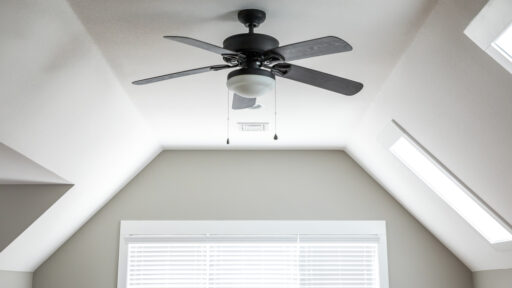Brick tiles are becoming a popular choice in modern design, and it’s easy to see why. They give the classic look of brick but are thinner, lighter, and easier to use. Whether you’re decorating a home, office, or even a café, brick tiles can add warmth, texture, and style without the heavy cost or construction of real brick walls.
In this article, we’ll look at how brick tiles are being used in modern design and why they’re such a smart and stylish option. Read on.
What Are Brick Tiles?
Brick tiles-also known as brick slips or brick veneers-are thin slices of real brick or brick-like materials designed to replicate the appearance of full-sized bricks. Typically ranging from 15mm to 25mm in thickness, they can be applied to walls much like ceramic tiles, giving the illusion of a solid brick wall without the weight and structural requirements of traditional masonry.
Available in a variety of colors, textures, and finishes, brick tiles can mimic reclaimed bricks, smooth new bricks, or even painted and whitewashed effects. This versatility makes them
ideal for both subtle and bold design applications.
Aesthetic Versatility: From Industrial to Minimalist
Modern design aesthetics are far from monolithic; they range from industrial and Scandinavian to minimalist and eclectic. Brick tiles integrate beautifully into these diverse styles, offering tactile warmth, depth, and visual interest.
Industrial Chic
The industrial design aesthetic-marked by exposed pipes, concrete floors, and raw materials-naturally aligns with brick tiles. Red or brown brick tiles can instantly evoke the feeling of converted warehouses or urban lofts. When paired with metal accents and open layouts, they help create a grounded, gritty ambiance that remains inviting rather than cold.
Scandinavian Minimalism
At the opposite end of the spectrum lies Scandinavian design, which emphasizes light, simplicity, and function. In this context, brick tiles-especially those in white, gray, or soft neutral tones-can add texture without overpowering the clean lines and airy spaces. They serve as a subtle backdrop that adds character while maintaining a minimalist integrity.
Modern Farmhouse
The modern farmhouse trend blends rustic charm with contemporary simplicity. Brick tiles, particularly in distressed or whitewashed finishes, are perfect for accent walls, fireplaces, or kitchen backsplashes. Their aged look contrasts beautifully with sleek cabinetry, quartz countertops, and black fixtures, achieving a balance of old and new.
Application Areas in Modern Spaces
Brick tiles are increasingly used in both residential and commercial projects, thanks to their aesthetic and functional versatility. Here are some popular
applications:
Feature Walls
A brick tile feature wall can serve as a dramatic focal point in living rooms, bedrooms, or even bathrooms. It adds dimension and texture that paint or wallpaper simply cannot match. In open-concept living areas, a brick accent wall can help define a space or create visual zones.
Kitchens and Backsplashes
In kitchens, brick tiles introduce warmth and contrast. Used as a backsplash, they provide a striking surface that resists heat and minor splashes while offering a timeless appeal. White or gray brick tiles can keep things contemporary, while red or reclaimed styles lean rustic.
Fireplaces and Chimneys
Brick has long been associated with hearths, and brick tiles are a modern way to maintain that connection without the bulk of traditional masonry. They can refresh an outdated fireplace surround or create a new focal point in homes with modern heating systems.
Bathrooms
Surprisingly, brick tiles are making their way into bathrooms, too. When properly sealed, they can withstand humidity and add an unexpected textural element. Earthy tones can give spa-like vibes, while painted or glazed finishes offer a cleaner, more modern look.
Outdoor Spaces
Brick tiles are also suitable for outdoor use, especially on patios, garden walls, and outdoor kitchens. Their durability and resistance to the elements make them a stylish yet practical choice for exterior design.
Blending Brick with Modern Materials
A hallmark of modern design is the thoughtful use of mixed materials. Brick tiles pair exceptionally well with materials commonly found in contemporary interiors:
Glass
The sleek transparency of glass juxtaposes beautifully with the rough texture of brick, especially in partitions or shower enclosures. This combination helps balance heavy textures with lightness and openness.
Steel and Metal
Brick and black metal are a match made in industrial heaven. Together, they create a bold, urban look that feels both edgy and refined.
Concrete
Both raw and polished concrete floors or countertops create a minimalist canvas that lets brick accents shine. The cool tone of concrete contrasts nicely with the natural warmth of brick tiles.
Wood
Whether it’s natural oak floors or walnut cabinetry, wood and brick together create a warm and inviting environment with a tactile appeal. This pairing adds depth and comfort to both modern and rustic-inspired interiors.
Sustainability and Cost Efficiency
Beyond aesthetics, brick tiles offer sustainability and cost benefits. Many are made from recycled materials or are repurposed from demolished buildings, making them an eco-friendly option. Their thin profile also reduces the amount of raw material needed and lessens the load on walls and structures.
From a cost perspective, brick tiles are generally more affordable and easier to install than full brick walls. This opens up the look of brick to a broader range of projects and budgets, allowing even small-scale renovations to incorporate brick textures. Make sure to visit a reputable brick slips
supplier to learn more about it.
Tips for Using Brick Tiles in Modern Design
To make the most of brick tiles in a contemporary setting, consider the following design tips:
Balance Is Key
Too many bricks can overwhelm a space. Use it strategically as an accent or feature, rather than covering every wall.
Choose the Right Grout
Grout color significantly affects the final look. A matching grout creates a uniform surface, while a contrasting one highlights the pattern.
Keep It Light
In small or dark rooms, opt for lighter brick tiles to avoid a heavy feel. They reflect more light and help maintain an open, airy atmosphere.
Seal for Durability
Especially in kitchens and bathrooms, sealing is crucial to prevent moisture damage and staining. A good sealant also makes the surface easier to clean and maintain over time.
Use Brick Tiles for Your Home Renovations
Brick tiles are a great way to bring charm and character into modern spaces. They’re easy to install, cost-effective, and work well with many design styles-from industrial to minimalist. If you want a simple way to add texture and warmth to your space, brick tiles are worth considering.
If you want to read more articles, visit our blog.








